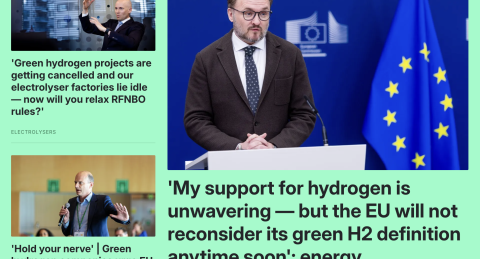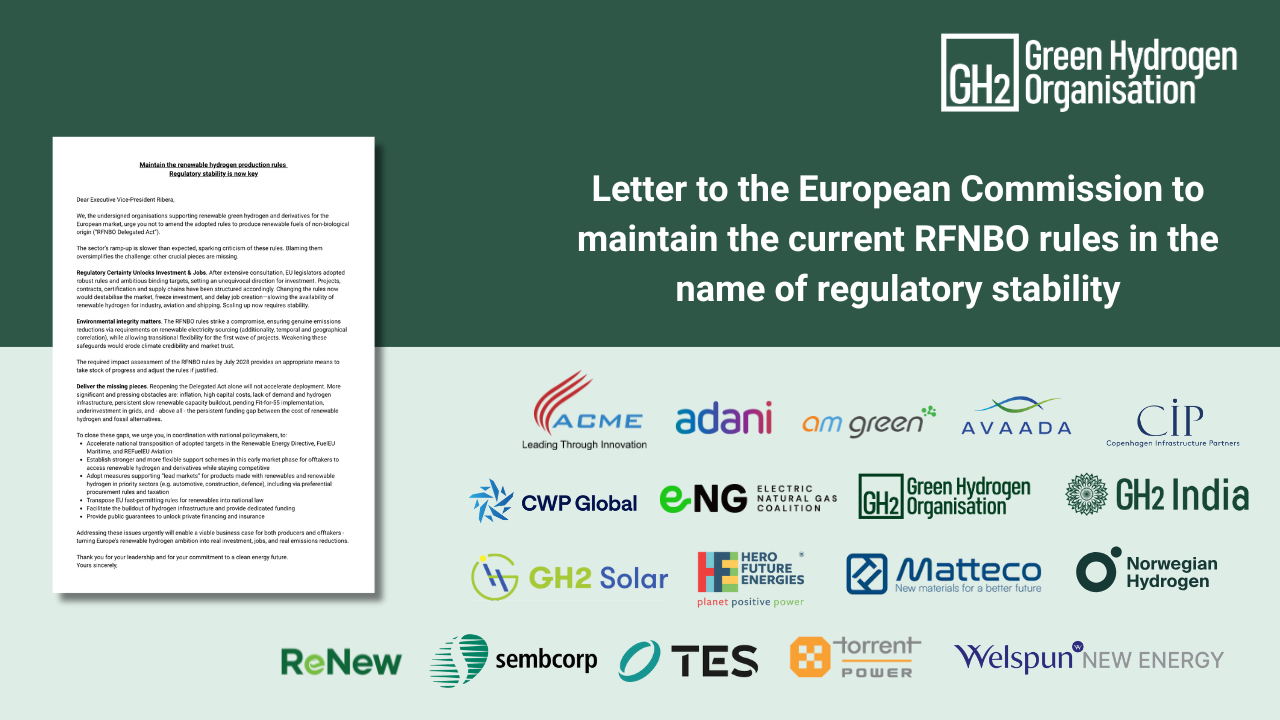Europe is struggling to get its green hydrogen sector moving: there are many reasons why
“Lines drawn in the sand over RFNBOs” is how Hydrogen Insight characterized a key debate which took place this week at European Hydrogen Week.

You would be forgiven for thinking that the rules for defining what qualifies as RFNBO green hydrogen are the only reason that the European Union has struggled to boost domestic production. As Hydrogen Europe said this week in its 2025 Clean Hydrogen Monitor, domestic supply of green hydrogen is forecast at 1.7 million tonnes by 2030 which is a far cry from the heady days of REPowerEU when we spoke of 10 million tonnes of EU production (let alone another 10 million tonnes of imports).
You might also think that those who believe green hydrogen made from renewables is the most sustainable production pathway for truly low carbon hydrogen are split between supporters and opponents of the current RFNBO rules.
My take is actually different: the various positions are much closer than you might think. We know there is a problem in Europe, and we have subtly different ideas about how to solve this.
European Commissioner Dan Jorgensen and multiple Commission officials made clear that the RFNBO rules would stay in place pending a review foreseen by mid-2028.
GH2 and several European and international industry partners seeking to supply Europe’s green hydrogen agree with the Commission and sent a letter to the Commission in support of the current framework.

Many millions of euros have been spent structuring projects, and in several cases reaching financial investment decision, based on the RFNBO framework. As we mentioned in the letter “changing the rules now would destabilise the market, freeze investment, and delay job creation—slowing the availability of renewable hydrogen for industry, aviation and shipping. Scaling up now requires stability.”
Europe’s electrolyser manufacturers are in a tough place, with very few sales and many job cuts. They would like to see the rules relaxed on additionality as part of a larger package of measures to support the sector. We are aligned on many of those other measures.
The RFNBO rules are by no means perfect. GH2 is on record as questioning why the principle of additionality should apply only to one sector, rather than other sectors such as AI and data centres which are adding significant extra demand for renewable electricity.
Whatever happens to the RFNBO rules, those first movers who have progressed their projects under the current framework must be protected.
As I discussed in the coffee breaks in Brussels, any modification of the RFNBO rules is likely to result in production prices becoming even lower in markets that are moving ahead at speed such as China and India.
The bigger prize for a flourishing green hydrogen supply chain in Europe lies in the following measures we outlined in our letter:
-
Accelerate national transposition of adopted targets in the Renewable Energy Directive, FuelEU Maritime, and REFuelEU Aviation
-
Establish stronger and more flexible support schemes in this early market phase for offtakers to access renewable hydrogen and derivatives while staying competitive
-
Adopt measures supporting “lead markets” for products made with renewables and renewable hydrogen in priority sectors (e.g. automotive, construction, defence), including via preferential procurement rules and taxation
-
Transpose EU fast-permitting rules for renewables into national law
-
Facilitate the buildout of hydrogen infrastructure and provide dedicated funding
-
Provide public guarantees to unlock private financing and insurance
A great example of progress in these areas is this week’s approval by the German cabinet of a draft Hydrogen Acceleration Act, which aims to speed up permitting for projects producing or importing green hydrogen and its derivatives, and for associated infrastructure such as storage and pipelines. This is the sort of action we need to see, and which will help lower costs.
Finally, healthy competition with blue hydrogen and ensuring green hydrogen can compete fairly is a major issue which still needs to be addressed. Another imperfect delegated act likely to be adopted by November on low carbon hydrogen (including blue hydrogen made from fossil gas) averted a worst-case scenario and puts some important restrictions on producing blue hydrogen from imported LNG (see this excellent analysis from Transport & Environment). However, areas like the default value for upstream methane leakage remains too generous and needs to be lowered.
A perplexing shipment of “low-carbon” blue ammonia
While more driven by Europe’s carbon border adjustment mechanism (CBAM) than the low-carbon hydrogen delegated act, today saw a significant but rather perplexing development in the form of a shipment of “certified low-carbon ammonia” made from CF Industries’ Donaldsville blue ammonia project to commodity trader Trafigura for delivery to Belgium’s Envalior, which specialises in engineering materials. We are perplexed because while a methodology to measure blue ammonia emissions was used (the “Verified Ammonia Carbon Intensity” programme) the carbon intensity of the shipment was not revealed. In addition, the methodology didn’t take into account any emissions associated with transport of this 23,500 tonnes of blue ammonia from the US to Belgium. Blue hydrogen and ammonia producers are going to need to be much more transparent if they wish to be taken seriously in Europe’s clean hydrogen future.
US withdraws funding for hydrogen hubs
In an own goal for its own energy security, prosperity and climate credentials, the US administration has cancelled the USD 1.2bn of federal government funding allocated to California’s ARCHES green hydrogen hub, as well USD 1bn for the Pacific Northwest Hydrogen Hub according to Hydrogen Insight and Bloomberg. By removing hubs that were intended to aggregate demand and connect producers with end-users, the cancellation risks leaving IRA’s hydrogen incentives unused and the US falling further behind in the global energy transition.
Joe Williams,
Deputy CEO, GH2